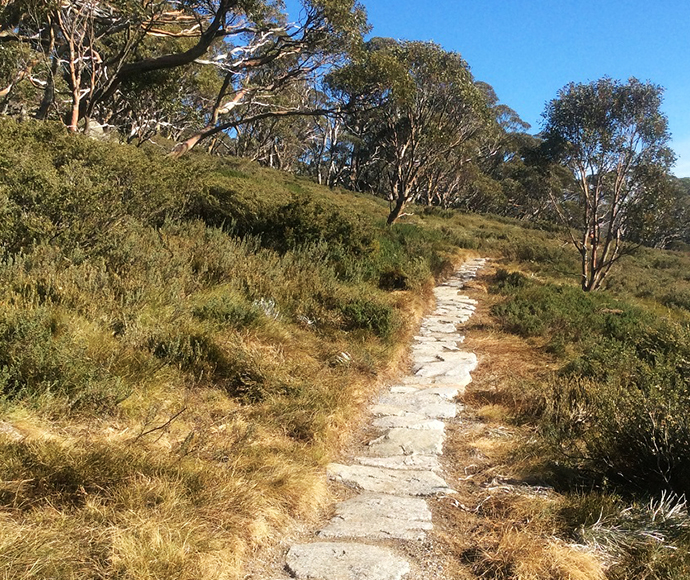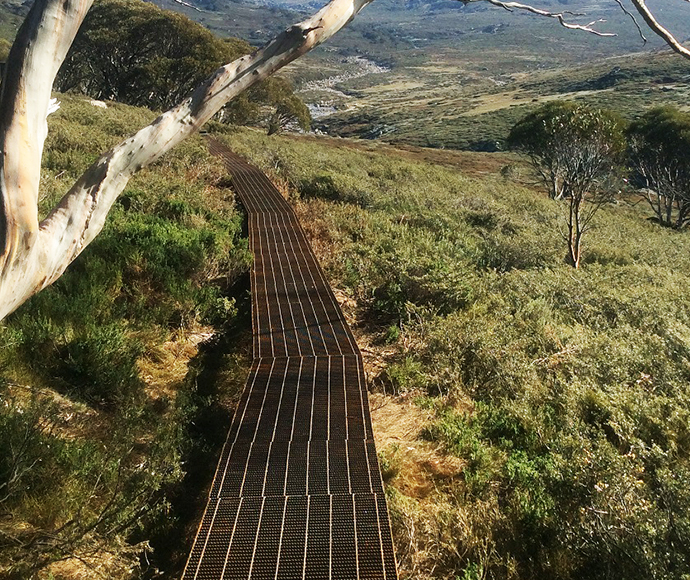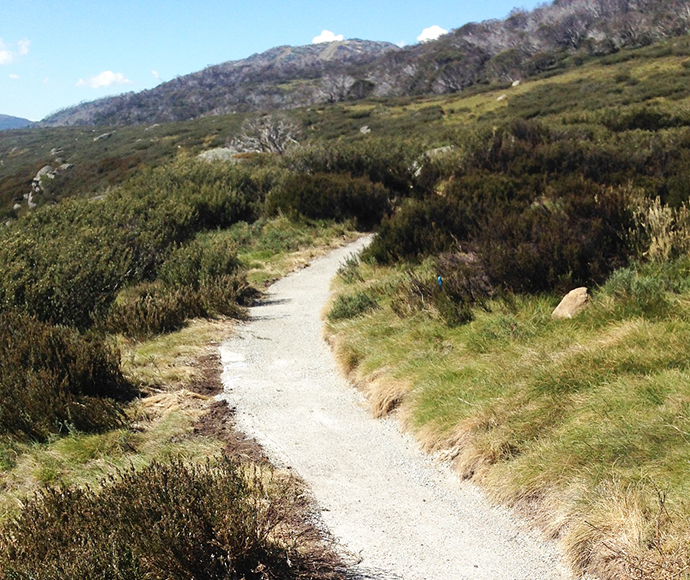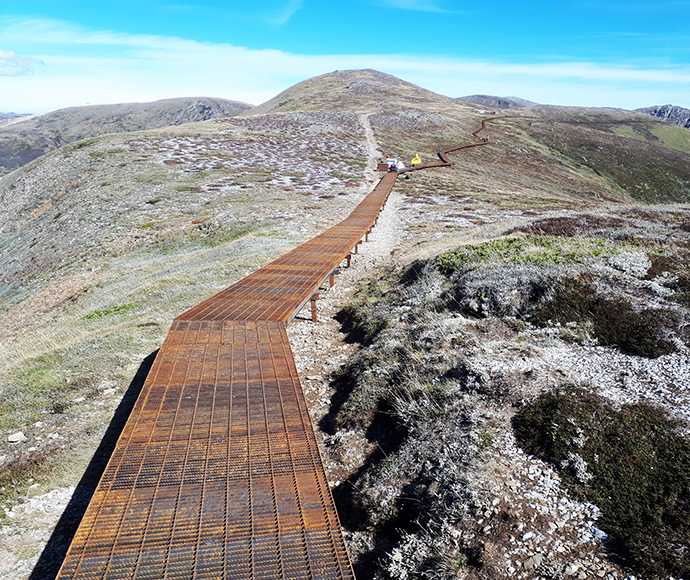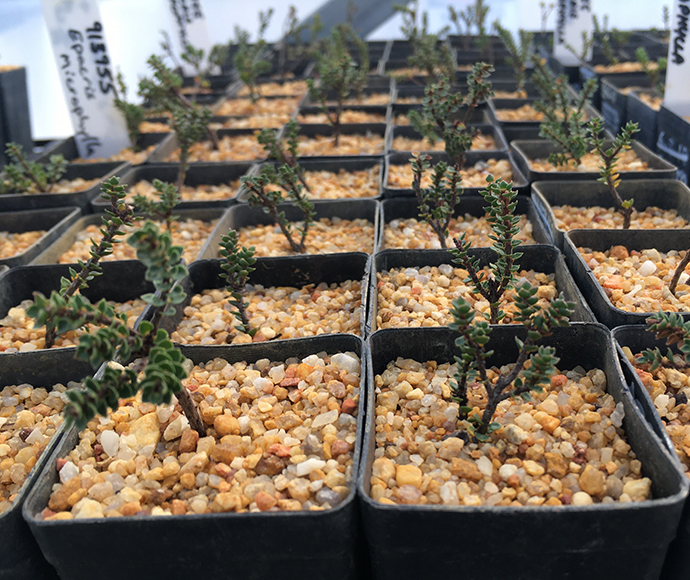Summer provided an opportunity to begin construction on new sections of walking track, until the New Year brought the NSW bushfires to the mountains, resulting in widespread evacuations from Kosciuszko National Park and surrounding towns. The project area was spared the worst impacts of the bushfires and work soon resumed on many fronts.
Plan of Management amendments
Late last year, the Minister for Energy and Environment, Matt Kean, adopted The Kosciuszko National Park Amendment to Plan of Management: Visitor Experience Improvements.
This plan of management amendment enables construction of the Snowies Alpine Walk on the Main Range, construction of the final stages of the shared-use Thredbo Valley Track, adaptive re-use of the Thredbo Ranger Station, and several further minor management and visitor improvements. See the amendments on our website.
Environmental assessment
The Review of Environmental Factors (REF) to inform the alignment and construction of the Snowies Iconic Walk was available for comment from 2 August to 2 September 2019.
The REF documents the environmental impact assessment of constructing 3 sections of track to link resorts and villages around Mount Kosciuszko and the Main Range:
- Guthega to Charlotte Pass
- Charlotte Pass to Perisher via Porcupine Rocks
- Perisher to Bullocks Flat.
The avoidance of significant impacts on threatened species and communities, especially alpine bogs, threatened reptiles and Mountain Pygmy-possum, was a major driver in selecting the final track configuration.
The Review of Environmental Factors Submission Report: Snowies Iconic Walk analyses the 14 submissions received, provides a summary of the issues and recommendations raised, and provides an outline of Department responses to the key objections raised in the 5 submissions that did not support the proposal.
In October 2019, the Biodiversity and Conservation Division of then Department of Planning, Industry and Environment considered the public submissions and recommended that the activity outlined in the REF proceed, subject to conditions. See the Determination Notice (PDF460KB) on the website.
The project was also referred to the Commonwealth Department of Environment and Energy and was determined not to need further assessment or approval under the Environment Protection and Biodiversity Conservation Act 1999.
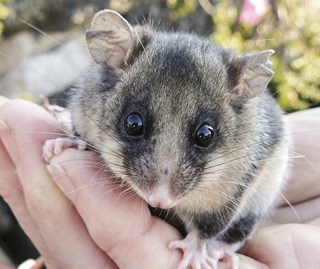
Mountain pygmy-possum, Kosciuszko National Park
New walking track from Charlotte Pass to Guthega
Construction is underway on stage 2 of the Snowies Alpine Walk between Charlotte Pass and Illawong (near Guthega). The track is approximately 5.6 kilometres long, running parallel to the Snowy River.
The photos here were taken in early April and show the 3 different track construction methods and surfaces: rock paving (including pitched rock); steel mesh elevated walkway, and gravel or natural surfaces. The contract was awarded in December with Steelworks Engineering constructing the steel mesh walkway, and Wild Tracks constructing the rock paving and gravel sections. Around 85% of the steel mesh and 40% of the gravel sections were completed before winter.
Rock paving refers to rock that is 'pitched' or constructed by 'cobbling' to create a surface that is durable, will not erode, blends with the local natural surroundings and will not shift due to forces of moving snow-loads. Elevated structures are being constructed to avoid impacts on sensitive habitats that support threatened species and ecological communities such as alpine reptiles, mammals, invertebrates and bog communities. They also protect cultural values as any cultural artefacts located during construction can be left in situ. The gravel surface shown is at the Guthega end of the track. Natural surfaces are used in lower elevations and less sensitive environments (e.g. where slopes are gentler and frost heave is less severe).
As you can see, contract work crews have limited construction impacts by airlifting materials to the site and restricting ground movements to the construction corridor itself. We thank them for their diligence in minimising the construction footprint to protect these unique alpine ecosystems.
Mount Lee walkway
Last year, we celebrated the opening of stage 1 of the Snowies Alpine Walk – the Mount Lee steel mesh walkway, which finished on time and on budget by contractors Steelworks Engineering. The purpose of these works was to realign 1.7 kilometres of the Main Range Walk to protect one of the rarest plant communities in the world, the windswept feldmark, which is a critically endangered ecological community.
As part of the rehabilitation plan for the old track, the National Parks and Wildlife Service are working with Australian National Botanic Gardens in Canberra to trial propagation and germination methods to supply plants for the project. This is a long process however there has been some early propagation success with Epacris microphylla cuttings. Rehabilitation work on the bypassed windswept feldmark will recommence in spring 2020.
Seamans Hut toilet
Seamans Hut is a scenic spot to stop and refuel along the Mount Kosciuszko Summit trail. With over 100,000 people walking to the summit of Mount Kosciuszko each season, the existing toilet at Rawson Pass is very busy and during the winter months it is completely covered with snow, making it unusable.
The new toilet at Seamans Hut will cater for summit trail walkers and backcountry campers from early 2021.
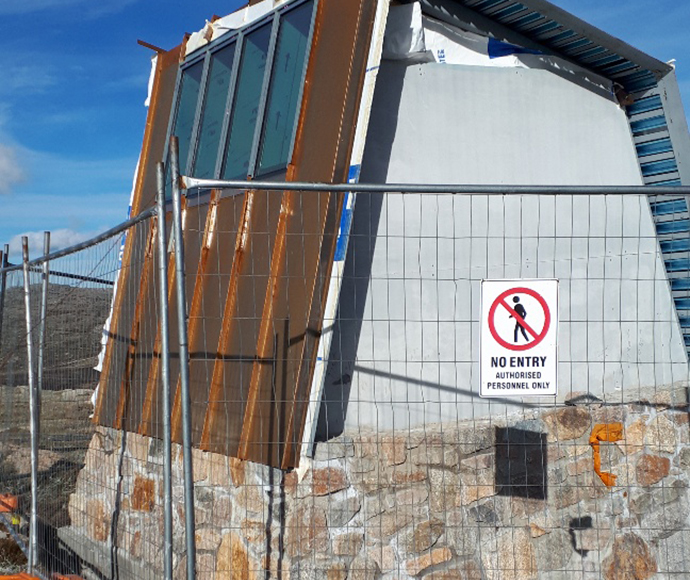
Stonework on the new Seamans Hut toilet
